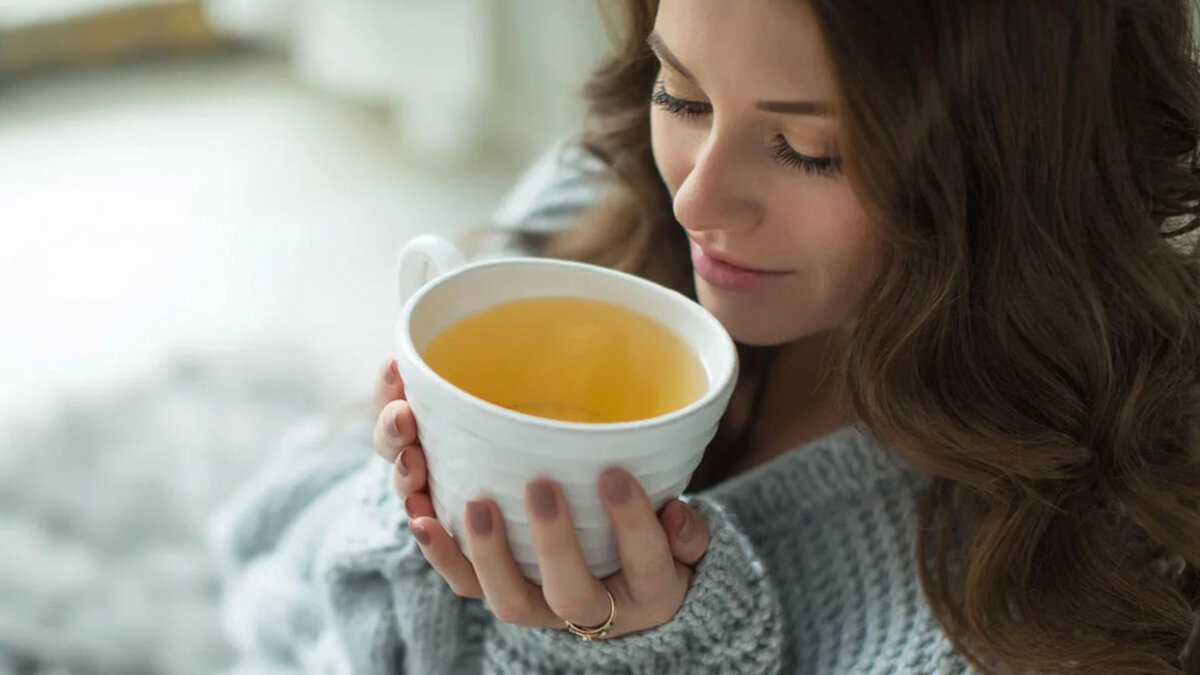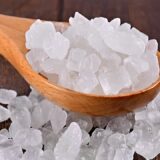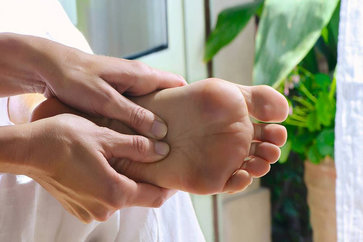What is Tea? Exploring Types, Flavors, and Brewing
Tea is not just a drink; it is a tradition, a ritual, and an experience that has been passed down through generations. From the elaborate tea ceremonies in Japan to the casual afternoon tea in England, its cultural significance is profound, symbolizing hospitality, relaxation, and connection.

What is Tea?
Tea is a beverage made from the leaves of the Camellia sinensis plant. The leaves are harvested, processed, and often steeped in hot water to create an aromatic and flavorful infusion.
The type and quality of the tea are determined by factors such as the specific tea leaves used, the processing method employed, and the level of oxidation achieved.
The resulting range of flavors, aromas, and colors makes tea a diverse and globally beloved drink enjoyed for its taste, cultural significance, and potential health benefits.
The History of Tea
Tea’s journey began in China, where it was initially used for medicinal purposes. From there, it found its way to Japan, where the Japanese tea ceremony became a symbol of harmony and tranquility.
In India, the British East India Company popularized tea and led to the establishment of tea plantations. The British obsession with tea spread to England, and afternoon tea became a cherished tradition. In Morocco, the art of brewing mint tea reflects the warmth of hospitality.
Types of Tea
Tea, with its rich diversity and exquisite flavors, comes in four primary types, each with its distinct characteristics and health benefits. From bold and robust black tea to delicate and refreshing white tea, exploring the world of teas opens up a realm of sensory delights.
1. Black Tea
Black tea is the most commonly consumed type of tea worldwide. It undergoes a full oxidation process, where the tea leaves are exposed to air, causing them to darken and intensify in flavor. The leaves are then rolled, shaped, and dried to preserve their distinctive taste.
- Taste: Black tea boasts a robust, malty flavor with notes of caramel and sometimes a hint of fruitiness. Depending on the variety, it can be sweet, earthy, or even smoky.
- Health Benefits: Rich in antioxidants and beneficial compounds, black tea is believed to support heart health, promote digestion, and boost immunity. It also contains caffeine, offering a gentle energy lift without the jitters.
- Popular Varieties: Assam, Darjeeling, Earl Grey, and English Breakfast are some of the well-known black tea varieties.
2. Green Tea
Green tea, revered for its numerous health benefits, undergoes minimal oxidation, preserving its natural green color and fresh taste. The leaves are quickly heated after harvesting to halt oxidation, resulting in a delicate and rejuvenating brew.
- Taste: Green tea offers a light, grassy flavor with vegetal undertones and a subtle hint of sweetness. Some varieties may exhibit floral or nutty notes.
- Health Benefits: Packed with antioxidants, particularly catechins like EGCG, green tea is known to promote weight management, improve brain function, and reduce the risk of certain chronic diseases.
- Popular Varieties: Matcha, Sencha, Dragonwell, and Jasmine are among the popular green tea varieties.
3. Oolong Tea
Oolong tea is a semi-oxidized tea, falling between black and green tea in terms of processing. The leaves are allowed to partially oxidize before being curled or twisted to develop their unique flavor profile.
- Taste: Oolong tea presents a diverse range of flavors, depending on the level of oxidation. It can range from floral and fruity to toasty and complex, often with a lingering sweetness.
- Health Benefits: Oolong tea is believed to aid in digestion, boost metabolism, and support healthy skin. Its polyphenol content contributes to overall well-being.
- Popular Varieties: Tie Guan Yin, Dan Cong, and Formosa Oolong are well-regarded oolong tea types.
4. White Tea
White tea is the least processed of all teas, with minimal oxidation and handling. It is made from the youngest tea leaves and buds, carefully dried to preserve their delicate flavors.
- Taste: White tea offers a subtle and nuanced taste, with a delicate sweetness and floral undertones. It has a delicate, pale brew.
- Health Benefits: As the least processed tea, white tea retains a high concentration of antioxidants, which may help protect the body from free radicals and promote healthy aging.
- Popular Varieties: Silver Needle and White Peony are some of the well-loved white tea varieties.
Top 6 Health Benefits of Drinking Tea
Beyond being a delightful beverage that warms the soul, tea offers a plethora of health benefits. From its rich antioxidant content to its potential role in promoting heart health, tea has been celebrated for its positive impact on overall well-being.
1. Antioxidant Powerhouse
Tea is a remarkable source of antioxidants, particularly flavonoids and polyphenols. These potent compounds help combat free radicals in the body, which are unstable molecules that can cause cellular damage and contribute to various health issues, including aging and chronic diseases.
The abundance of antioxidants in tea makes it an excellent ally in the fight against oxidative stress, helping to protect cells and tissues from damage and supporting overall cellular health.
2. Improved Heart Health
Several studies have suggested a link between tea consumption and a reduced risk of heart disease. The antioxidants in tea may aid in improving cardiovascular health by reducing inflammation, improving blood vessel function, and lowering bad cholesterol levels.
Both green and black teas have been associated with cardiovascular benefits, making them heart-friendly choices to include in your daily routine.
3. Boosted Immune System
Tea can lend a helping hand to your immune system, enhancing its ability to defend against infections and illnesses. The catechins found in green tea, for example, have been shown to have antiviral and antibacterial properties, which can help the body fend off common pathogens.
Regular consumption of tea, coupled with a balanced diet and a healthy lifestyle, can bolster your body’s natural defenses, keeping you better prepared to face seasonal challenges.
4. Reduced Risk of Cancer
While more research is needed to establish definitive links, some studies have indicated that tea consumption may play a role in reducing the risk of certain types of cancer. The powerful antioxidants in tea may help neutralize free radicals that can contribute to cancer development.
In particular, green tea has garnered attention for its potential protective effects against various types of cancer, including breast, prostate, and colorectal cancers.
5. Weight Management
For those on a weight management journey, tea can be a valuable companion. Green tea, in particular, has been associated with an increase in metabolism, which can aid in calorie burning. Additionally, the modest amount of caffeine in tea can provide a gentle energy boost that may support physical activity.
Incorporating tea into a well-balanced diet and active lifestyle can contribute to healthy weight management efforts.
6. Mental Clarity and Focus
Beyond its physical health benefits, tea can also provide mental perks. The combination of L-theanine and caffeine in tea has been found to promote alertness and focus while fostering a state of calmness and relaxation. This unique blend of mental clarity and tranquility can be especially beneficial during moments of stress or intense concentration.
How Do You Brew the Perfect Cup of Tea?
Brewing a perfect cup of tea is an art that requires attention to detail and an appreciation for the subtleties of flavor and aroma.
Whether you prefer the boldness of black tea, the delicate notes of green tea, or the complexity of oolong tea, following these steps will ensure that each cup of tea you brew is a delightful and satisfying experience.
1. Choosing the Right Tea Leaves
The foundation of a great cup of tea starts with high-quality tea leaves. Whether you opt for loose tea leaves or tea bags, selecting fresh and well-stored tea is essential. Look for teas with intact leaves or buds, as they retain more of their natural flavors and aromas.
2. Water Temperature and Quality
The temperature of the water used for brewing varies depending on the type of tea. As a general guideline:
- Black Tea: Boiling water (100°C/212°F)
- Green Tea: Warm water (70-80°C/158-176°F)
- Oolong Tea: Hot water (80-90°C/176-194°F)
- White Tea: Warm water (70-80°C/158-176°F)
Using fresh, filtered water is recommended to enhance the purity of the tea’s taste and avoid any unwanted impurities.
3. Steeping Time
The steeping time is critical for achieving the desired strength and flavor of the tea. Steeping too long can result in bitterness, while steeping too briefly may yield a weak brew.
- Black Tea: 3-5 minutes
- Green Tea: 1-3 minutes
- Oolong Tea: 3-5 minutes
- White Tea: 2-4 minutes
Adhering to the recommended steeping times ensures that the tea extracts the best of its flavor without becoming overly tannic or astringent.
4. Tea Accessories
Having the right teapot, teacup, or infuser can elevate your tea experience. Porcelain, glass, or clay teapots are popular choices as they do not impart any flavors to the tea. Using a tea infuser or a tea bag can also make the process more convenient while allowing the leaves to expand and infuse fully.
5. Water-to-Tea Ratio
The ideal water-to-tea ratio depends on personal preference and the type of tea. As a starting point:
- Black Tea: 1 teaspoon of tea leaves per 8 ounces of water
- Green Tea: 1 teaspoon of tea leaves per 8 ounces of water
- Oolong Tea: 1 tablespoon of tea leaves per 8 ounces of water
- White Tea: 1 tablespoon of tea leaves per 8 ounces of water
Feel free to adjust the ratio to suit your taste preferences, keeping in mind that using more leaves will result in a stronger brew.
6. Preparing the Tea
To prepare the tea, follow these steps:
1. Heat the water to the appropriate temperature.
2. Rinse the teapot or teacup with hot water to warm it.
3. Add the tea leaves to the infuser, teapot, or teabag in the cup.
4. Pour the hot water over the tea leaves and let it steep for the recommended time.
5. Once the steeping time is up, remove the tea leaves or teabag to prevent over-extraction.
7. Enjoying Your Tea
Finally, take a moment to savor the aroma and flavors of your freshly brewed tea. Hold the teacup close and breathe in the delicate scents. Take small sips to fully appreciate the taste and nuances of the tea.
Remember, brewing the perfect cup of tea is an enjoyable journey of exploration and experimentation. With practice, you’ll discover your preferred brewing techniques and be able to tailor each cup of tea to your unique taste preferences.
Tea Culture Around the World
Tea is not just a beverage; it’s a cherished cultural tradition that has woven its way into the fabric of societies around the world. From ancient tea ceremonies in Asia to elaborate afternoon tea gatherings in Europe.
The diverse tea cultures offer a glimpse into the rich history and customs of each region. Let’s embark on a journey to explore the fascinating tea cultures that have flourished across the globe.
1. China: The Birthplace of Tea
China holds a special place in the heart of tea culture, being the birthplace of this beloved beverage. The ancient Chinese tea culture dates back thousands of years and is steeped in rituals and symbolism.
The Chinese tea ceremony is a sacred tradition that emphasizes harmony, respect, and mindfulness. It involves intricate steps of preparation and presentation, creating an elegant and serene atmosphere. The Gongfu tea ceremony, with its small teapots and multiple infusions, is particularly renowned for its precision and grace.
Tea houses are a prominent feature of Chinese culture, where friends and family gather to enjoy a wide variety of teas, from delicate green teas to robust black teas. Drinking tea in China is not merely a casual act; it’s an art that celebrates the spirit of hospitality and social connection.
2. Japan: The Way of Tea
In Japan, tea culture is deeply ingrained in everyday life and spiritual practices. The Japanese tea ceremony, known as “chanoyu” or “sado,” is a time-honored tradition that embodies simplicity, tranquility, and respect.
The tea ceremony is an elaborate ritual, with every movement and gesture carrying profound meaning. It is a meditative practice that encourages participants to be present in the moment and find harmony within themselves and with others.
Matcha, a powdered green tea, is the star of the Japanese tea ceremony. It is finely ground and whisked with hot water to create a frothy and vibrant green tea. Matcha has become popular worldwide for its unique flavor and health benefits.
3. India: Chai Culture
In India, tea is more than just a beverage; it’s an integral part of daily life and social interactions. Indian chai, a spiced tea brewed with milk and various spices, is a quintessential symbol of hospitality and warmth.
Chaiwallahs, or tea vendors, can be found on almost every street corner, serving steaming cups of chai to passersby. The preparation of chai involves simmering tea leaves, spices like cardamom, cinnamon, and ginger, with milk and sugar to create a creamy and aromatic blend.
Tea breaks are an essential part of the Indian workday and family gatherings, offering a moment of respite and connection amidst the hustle and bustle of daily life.
4. England: Afternoon Tea Tradition
Tea in England is a cherished tradition that became popular during the 19th century. Afternoon tea, also known as low tea, was introduced by Anna, the Duchess of Bedford, who found herself hungry between lunch and dinner.
Afternoon tea is an elegant affair, typically served with a selection of finger sandwiches, scones with clotted cream and jam, and an assortment of delicate pastries and cakes. Tea is served in fine china teapots and accompanied by milk, sugar, and lemon.
The ritual of afternoon tea became a fashionable social event, with ladies dressing up for the occasion and engaging in polite conversation while enjoying their tea and treats.
5. Morocco: The Art of Mint Tea
In Morocco, tea is a symbol of hospitality and friendship. The Moroccan mint tea, known as “Atai,” is an integral part of the country’s culture and social gatherings.
Prepared with green tea leaves, fresh mint leaves, and sugar, the Moroccan mint tea is sweet and refreshing. The tea is poured from a height to create a frothy layer, and the process of pouring is repeated three times to ensure a well-infused and flavorful brew.
Sharing mint tea is a cherished custom in Morocco, and offering tea to guests is a gesture of warmth and hospitality.
Understanding Caffeine
Caffeine, a naturally occurring stimulant, is one of the most widely consumed substances globally. It can be found in various beverages, including coffee, tea, energy drinks, and soft drinks, as well as in some foods and medications.
Understanding caffeine, its effects, and its potential benefits and drawbacks is essential for responsible consumption and informed decision-making.
1. How Caffeine Works?
Caffeine works by blocking the action of adenosine, a neurotransmitter in the brain that promotes relaxation and drowsiness.
By interfering with adenosine, caffeine enhances alertness and reduces the perception of fatigue. As a result, many people turn to caffeine to stay awake, increase focus, and improve cognitive function.
2. Sources of Caffeine
The primary sources of caffeine include:
- Coffee: One of the most popular sources of caffeine, coffee beans contain varying amounts of caffeine depending on the type of coffee and the brewing method.
- Tea: Tea leaves, especially those from Camellia sinensis (black, green, white, and oolong teas), also contain caffeine, although generally in lower quantities than coffee.
- Energy Drinks: These beverages are specifically formulated to provide a quick energy boost and usually contain higher concentrations of caffeine compared to other drinks.
- Soft Drinks: Some sodas and cola beverages contain caffeine, though the levels are typically lower than in coffee or energy drinks.
- Chocolate: Cocoa beans naturally contain caffeine, so chocolate and cocoa-based products may contribute to overall caffeine intake.
3. Effects of Caffeine
Caffeine’s effects can vary depending on an individual’s tolerance, sensitivity, and the amount consumed. Some of the common effects include:
- Alertness and Focus: Caffeine can enhance mental alertness and improve concentration, making it a popular choice for staying awake and maintaining productivity.
- Physical Performance: Caffeine has been shown to improve endurance and reduce perceived exertion during physical activities, making it a common supplement among athletes.
- Mood Enhancement: Caffeine may elevate mood and temporarily alleviate feelings of depression and anxiety in some individuals.
- Sleep Disturbance: Consuming caffeine too close to bedtime can disrupt sleep patterns, leading to difficulties falling asleep and poorer sleep quality.
Recommended Caffeine Intake
While caffeine can have beneficial effects, excessive consumption can lead to adverse effects such as restlessness, increased heart rate, and jitteriness.
The recommended daily intake of caffeine varies depending on factors like age, health condition, and individual tolerance.
For most healthy adults, moderate caffeine consumption (around 200-400 milligrams per day, roughly equivalent to 2-4 cups of coffee) is considered safe.
Pregnant women and individuals with certain health conditions may need to limit or avoid caffeine altogether.
FAQs: What is Tea?
1. Does tea have any health benefits?
Yes, tea is rich in antioxidants and has been associated with improved heart health, a boosted immune system, and a reduced risk of certain cancers.
2. Which tea has the most caffeine?
Black tea generally contains the highest amount of caffeine, followed by green tea and oolong tea.
3. Can tea stain my teeth?
Yes, tea can stain teeth, but proper oral hygiene can help prevent significant discoloration.
4. Is all tea the same?
No, there are various types of tea, each with distinct flavors, aromas, and health benefits.
5. Is tea sustainable and ethical?
It can be sourced from ethically responsible and environmentally friendly tea producers.
As you explore the diverse varieties, brewing techniques, and health benefits, remember that tea isn’t just a beverage; it’s a journey that connects you to nature, tradition, and yourself.

























